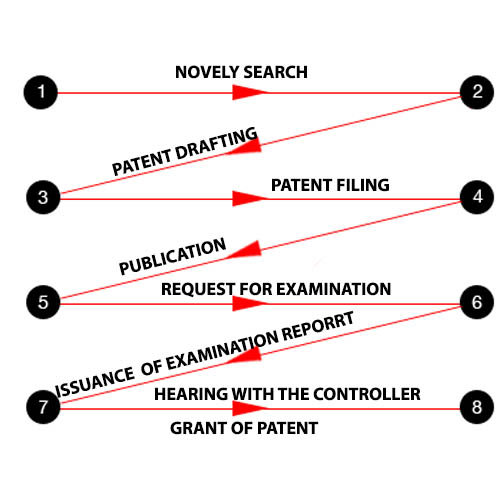Patent registration
A patent is an exclusive right granted by the government to the inventor for an invention which is a new and inventive solution to an existing technological problem. A patent is a form of intellectual property that gives its owner the legal right to exclude others from making, using, selling and importing an invention for a limited period of years in exchange for complete public disclosure of the invention. The complete patent registration process involves a series of steps which are to be mandatorily followed to get a patent in India.
Patent registrations have a validity of 20 years from the date of filing of patent application
Requirement for Invention to be Patentable:
1) Novelty- the novelty requirement basically states that an invention should never have been published in the public domain. It must be new with no same or similar prior arts.
2) Inventive Step- The subject matter you wish to get patented should not be obvious to experts in the field. That is, it should be technologically advanced or economically profitable to be patented.
3) Industrial Application- The invention must be capable of being applied in any industry, which means that the invention must have practical utility in order to be patentable.
4) Not publically/commercially disclosed- the invention should never have been published in the public domain. It must be new with no same or similar prior arts.
5) Patentable matter- The foremost consideration is to determine whether the invention relates to a patentable subject-matter. Sections 3 and 4 of the Patents Act list out non-patentable subject matter. As long as the invention does not fall under any provision of Sections 3 or 4, it means it has patentable subject matter.

